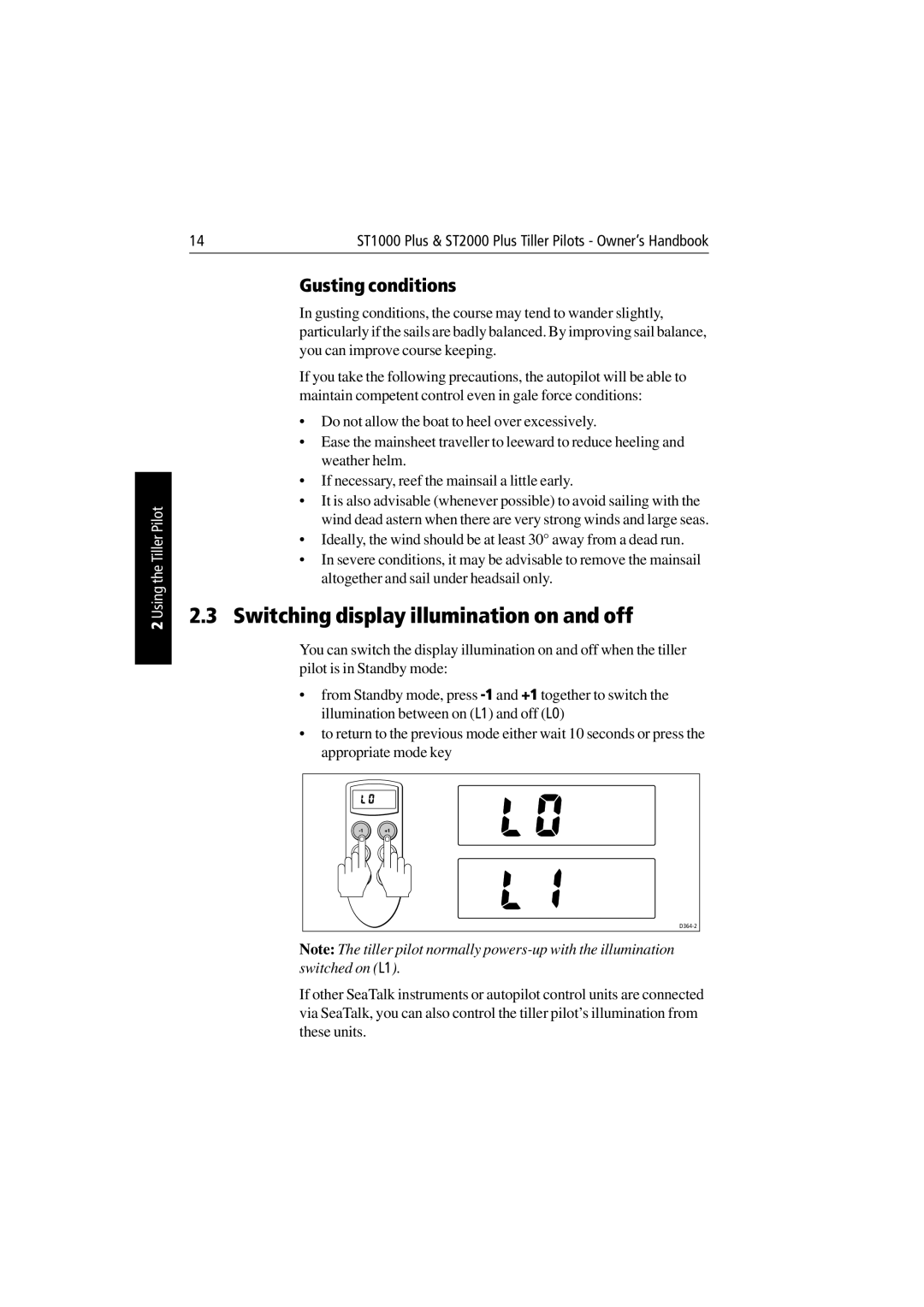
2 Using the Tiller Pilot
14 | ST1000 Plus & ST2000 Plus Tiller Pilots - Owner’s Handbook |
Gusting conditions
In gusting conditions, the course may tend to wander slightly, particularly if the sails are badly balanced. By improving sail balance, you can improve course keeping.
If you take the following precautions, the autopilot will be able to maintain competent control even in gale force conditions:
•Do not allow the boat to heel over excessively.
•Ease the mainsheet traveller to leeward to reduce heeling and weather helm.
•If necessary, reef the mainsail a little early.
•It is also advisable (whenever possible) to avoid sailing with the wind dead astern when there are very strong winds and large seas.
•Ideally, the wind should be at least 30° away from a dead run.
•In severe conditions, it may be advisable to remove the mainsail altogether and sail under headsail only.
2.3Switching display illumination on and off
You can switch the display illumination on and off when the tiller pilot is in Standby mode:
•from Standby mode, press
•to return to the previous mode either wait 10 seconds or press the appropriate mode key
Note: The tiller pilot normally
If other SeaTalk instruments or autopilot control units are connected via SeaTalk, you can also control the tiller pilot’s illumination from these units.
